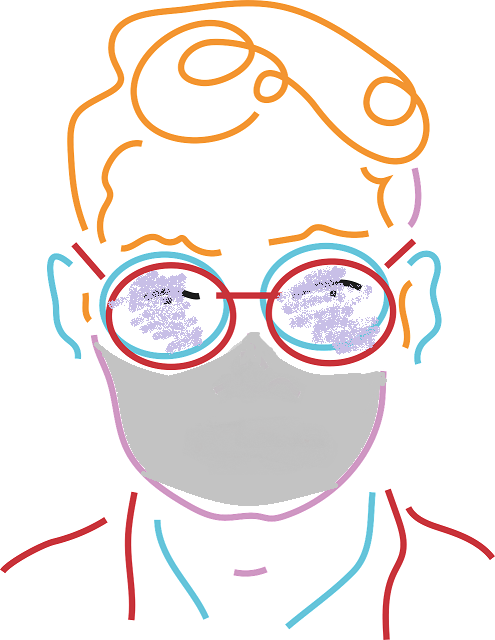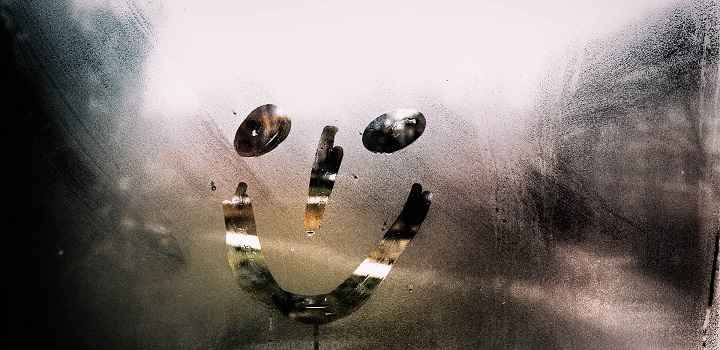Your cart is currently empty!

Methods for steaming glasses while wearing a mask.
The order to cover the face is still in effect. It is difficult to find people who find moving around in a face mask comfortable. Could there be anything worse than widespread problems with breathing through the material? Maybe! Add to that impaired vision, through constantly fogged-up glasses. Health professionals know a few tricks to solve this annoying problem, but finding a method that will work always and in every case is impossible. It all depends on what kind of mask we have, what kind of goggles we have purchased and under what conditions we use this equipment. Finding the perfect solution will require trial and error.
Why does the mask cause the glasses to be covered with steam?

People who wear glasses on a daily basis already know that eyeglass lenses fog up when you leave a warm house outside where the air is cold, or when you open the oven door where the temperature is much higher than that around you. When the mask is put on, warm breath can escape through the upper edges along the tops of the cheeks. When hot air lands on cooler lenses, it creates condensation on the surface and a hazy film. The low air temperature only makes the situation worse.
So how do you stop the process of glasses evaporation?
You can start by improving the seal of the mask around the upper part of the face.
- Adjust the mask. The medical masks have built-in, metal doggie straps that can be adjusted to fit the back of the nose. You can add commercially available plastic nose tabs or stiffen the fabric at the top of the fabric mask with a suitable fabric remedy to achieve the same effect.
- Tighten the mask. Adjust the elastic bands or ear straps so that the mask fits tightly around the face. If the air is coming out of the top, the mask has not been put on correctly. Most of the exhaled air should pass through the mask. If you feel air coming in or going out the sides, bottom or top of the mask, tighten the rubber bands.
- Seal the mask. Another option is to use white sports tape, medical tape or another skin-safe product to seal the top of the mask around the back of the nose. However, do not use non-porous household tapes, such as packing tape or duct tape, which can irritate the skin.
- Pull up the mask. The easiest tip to implement, for when you wear masks every day, is to use the weight of your glasses to block airflow from the top. Simply pull the mask over the back of the nose as high as possible (after making sure it is still under the chin) and let the glasses rest on the mask. Most often this method is quite effective, but it depends on the shape and type of glasses you have.
Do home lens treatments work?
If the above methods, for various reasons, do not meet expectations, perhaps home remedies for fogging will help.
Soapy water. Washing the glass with soapy water and letting it air dry can help. The soap acts as a surfactant, the soapy water leaves a thin film that keeps water molecules from forming droplets leading to a fogging effect.
Try other home remedies. Popular suggestions for treating menses in this way include baby shampoo, toothpaste and shaving cream. Vinegar is often recommended, but most experts say that this solution, however, does not work. The main challenge in “improving” lenses is to add the right amount of substances to stop evaporation, using ingredients in the wrong proportions will not help.
Skip the float method. Swimmers and divers regularly use a well-known trick to keep their swimming goggles from evaporating. They spit on their glasses or masks and rub them. This time, consider that we are dealing with a virus and trying to stop the spread of germs, so spitting on glasses is not recommended during a pandemic.
What about commercial anti-evaporation products?
You can buy commercial wipes and sprays from the “anti-vapor” series, but this may be an investment that will disappoint us in terms of the results obtained, and the price of professional means may strain our budget. But of course, there is an alternative!
Conclusion: none of the above works. What’s wrong?
Now the bad news. Many glasses are now protected with special protective coatings that resist glare and smearing. The problem is that coatings can also resist anti-evaporation treatments, including household remedies such as soapy water and all commercial methods.
Coatings that provide protection against UV rays, glare, scratches, smudges, dust and water are at an ever-increasing level, while at the same time some of them also protect the lenses from the described anti-evaporation measures.
If none of the methods work, do you have to get used to living with foggy lenses while wearing a mask?
As a last resort, you can try pushing your glasses toward the tip of your nose to allow airflow and stop evaporation. The downside is that it can distort the image seen by the eyeglass wearer, and slipped glasses can stick to the nose quite insecurely, which also will not contribute to comfort on a daily basis.
As a consolation for those for whom none of the methods described is a viable solution to the problem: fogging of glasses will be less of a problem when it gets really warm and the outside temperature approaches breathing temperature.




